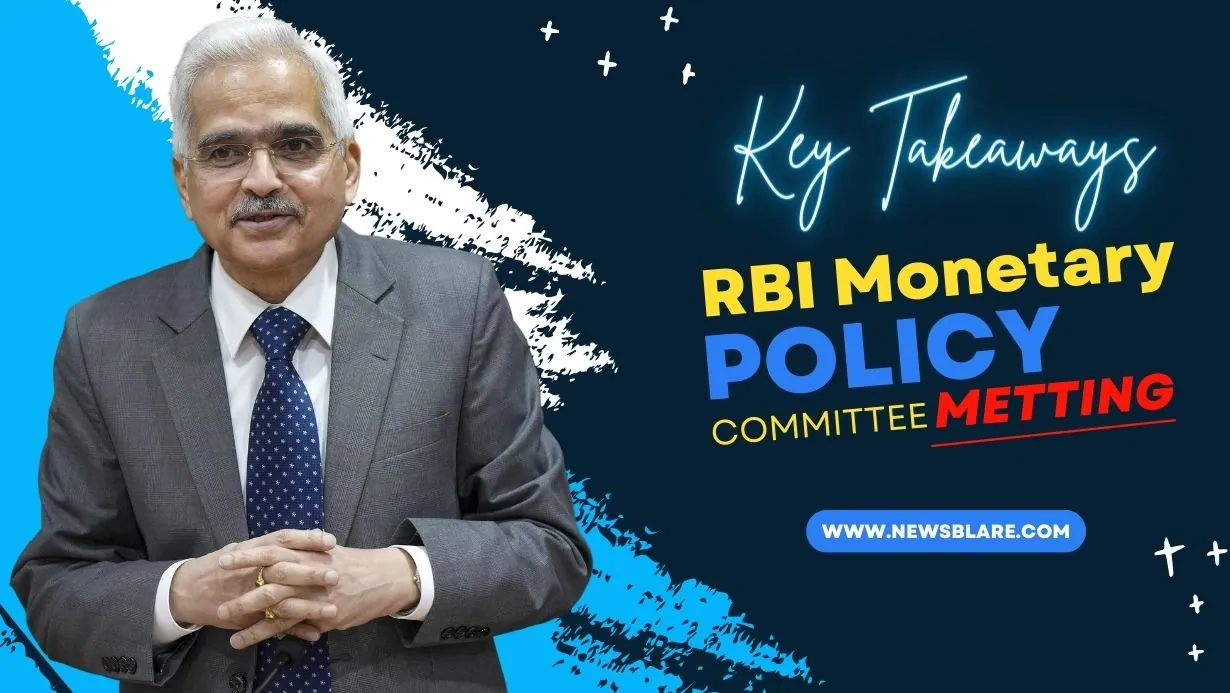The Reserve Bank of India (RBI) Governor Shaktikanta Das said that Monetary Policy Committee (MPC) decided to keep its repo rate at ~6.5%. Its April 4, 2024 MPC meeting considered some critical aspects related to the Indian economy, which includes growth, inflation, liquidity, along with financial stability. Takeaways from monetary policy committee meeting included the repo rate (along with other rates), assessment about growth and inflation, implications, etc.
MPC maintained policy repo rate, with other rates remaining unchanged. Majority of the members voted for withdrawal of accommodation to make sure that inflation aligns with the central bank’s 4.0% target.
Why RBI did not cut the interest rate this time?
Despite significant geopolitical conflicts and disruptions, overall momentum in the global economy was resilient, with trade growth anticipating to increase. The country’s economic activity saw an increase as manufacturing and services sectors supported the momentum.
Apart from this, strong rural and investment prospects make the governor believe that it will be wise to maintain the repo rate at ~6.50%. While analysts and experts continue to assess the takeaways from monetary policy committee meeting, Mr. governor announced that headline inflation saw some moderation.
The apex bank also expects CPI inflation for FY24-25 at ~4.5%. Since this projection is higher than RBI’s targeted rate of ~4%, it emphasised on need for focused disinflationary policy actions. With growth remaining strong, the committee’s focus remained on achieving price stability to maintain strong growth levels.
Therefore, it goes without saying that RBI’s decision to maintain repo rate exhibits its commitment to help economic stability as domestic economic dynamics continue to evolve.
Factors impacting India’s inflation rate
India continues to suffer from increased inflation during 1970s because of the similar reasons as the rest of the world, which are food and energy price shocks.
According to National Statistics Office (NSO), India’s retail inflation rate declined to ~5.09% in February 2024, which is still high as per the economists and fund managers. Retail inflation rate saw a slight drop of 0.01% in 1 month, as it was ~5.10% in January 2024.
Experts believe that prime reason for stubbornly high CPI, which is retail inflation of India, is because of supply side constraints. Apart from this, increased inflation rate limits the country’s manufacturing environment.
Pent-up demand which was being seen because several countries went back to pre-pandemic modes, steep increases in food and energy prices after Russian invasion of Ukraine together with corporate profiteering all have collectively led to stubbornly high inflation. Large fiscal stimuli which was given by governments further resulted in increased demand.
Debate continues to be between those experts and fund managers who believe that inflation remains transitory and others who think that it is persistent. Such mindset results for different policies.
Those fearing persistent inflation argue that post-pandemic stimulus funding packages were significantly large, and that the US Fed should raise or keep the rates to restrict inflation, even though there is a risk of triggering a recession.
Steady disinflation which was seen globally during 2023 appears to be settling this debate. Therefore, experts have now started believing that such surge was transitory. The US inflation, in November 2023, came in at ~3.1%.
Inflation patterns in West seem to be quite different from those present in Asia. Inflation remained muted in China, while in India it hovered ~6% level. In Korea and Indonesia, inflation increased for few months in 2022 and then it later on subsided.
This exhibits that underlying factors which impact these fluctuations in West and in rest of the world can be different.
What lies ahead?
Some of the leading key indicators of banks and NBFCs are healthy, which continues to emphasise on importance of governance and regulatory compliance. RBI remains committed to engage with financial entities so that regulations can be simplified and compliance burdens are being reduced.
Reserve Bank of India maintained its GDP growth forecast ~7% for FY24-25 financial year, which means its lower than ~7.6% expansion estimated for FY24. Inflation for FY25 is expected at ~4.5%, with Q1 coming at ~4.9%, Q2 at ~3.8%, Q3 at 4.6%, and finally for Q4 at 4.5%.
Most of the analysts expect that RBI will go for rate cut cycle in the later-half of this year or in early months of FY25. A report by Goldman Sachs expects that India will see a 25 bps cut each in 3Q and 4Q for 2024 calendar year.
However, the US Fed Chair Jerome Powell mentioned that US central bank might go for rate cuts after June.
